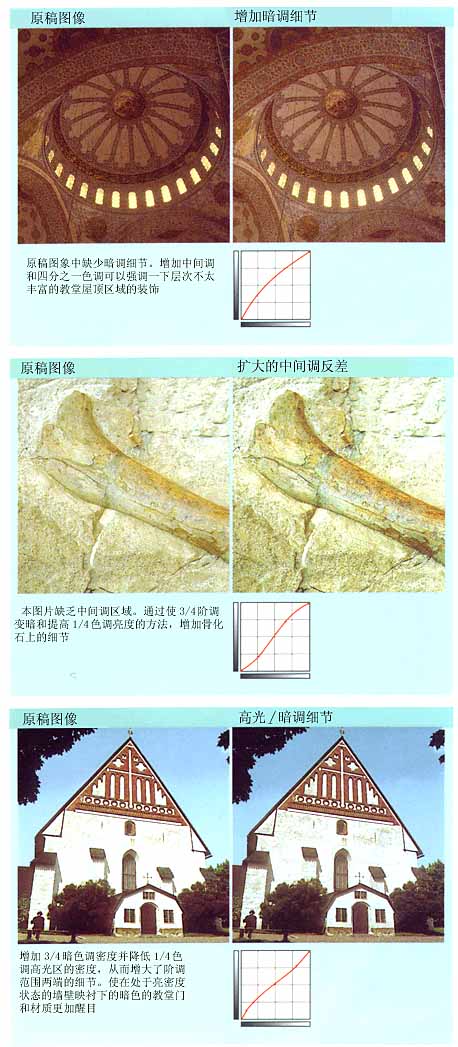
â— Nonlinear tone correction
The r correction is another term used for non-linear tone correction. It comes from the photography industry. A high r value indicates that the film has a high contrast, and the image processing program uses a different method to edit the r value or tone curve in a non-linear manner. Some programs provide freehand drawing tools. Although it is possible to improve the smoothness, it is still difficult to control accurately. Other programs divide the curve into many control points. You can use hand or in some cases, will move these points to new positions according to numbers. Equipped with a sliding block.
For color images, the tone correction is usually performed before the color correction, and the tone curve can be saved from time to time for other images. Using a tone curve on the scanner, more data can be sampled during the tone correction process to increase the range of gradation such as dark tone.
For dark-tone images, you can increase the darkness level by highlighting one-quarter bright tone and midtones and highlighting the image. For such manuscripts, the high-light area is actually insufficient, so the compression of this area will not have any effect on the quality. Reducing the 3/4 dark tone while brightening the 1/4 tone of the highlight area results in an S-curve, which results in a very low-contrast image. The contrast and details of the midtones are increased, while the highlights and shadow levels are compressed but not completely lost.
A high-contrast image can be improved by reducing the density of the 1/4 highlight region by increasing the 1/4 shadow region and extending these regions to the midtone output region. For the compression of the middle of the manuscript, it is a feasible method.
The darker tone density region of the transmitted manuscript may use a gamma correction method to maintain additional detail.
Source: Qilu Graphic Arts